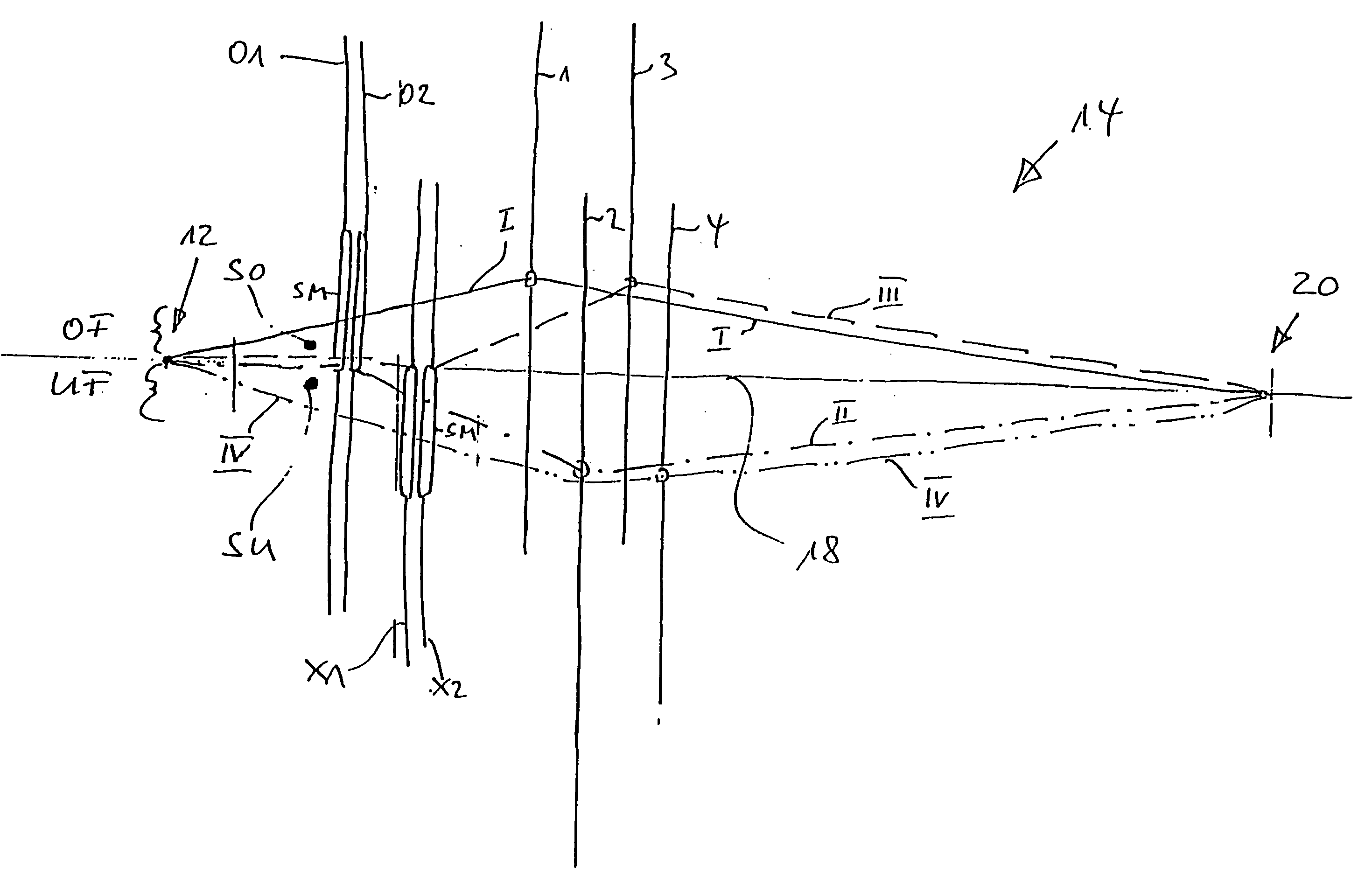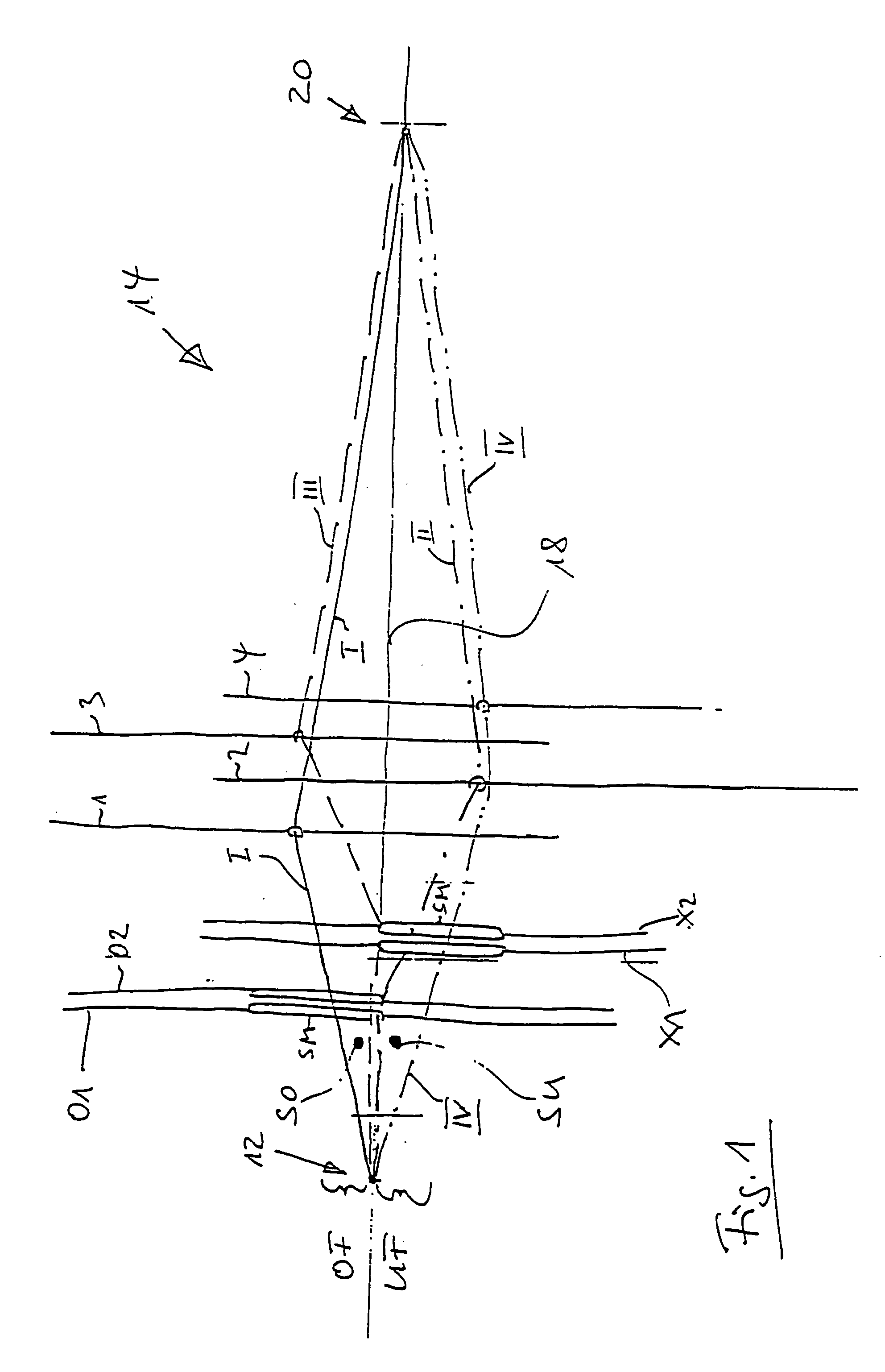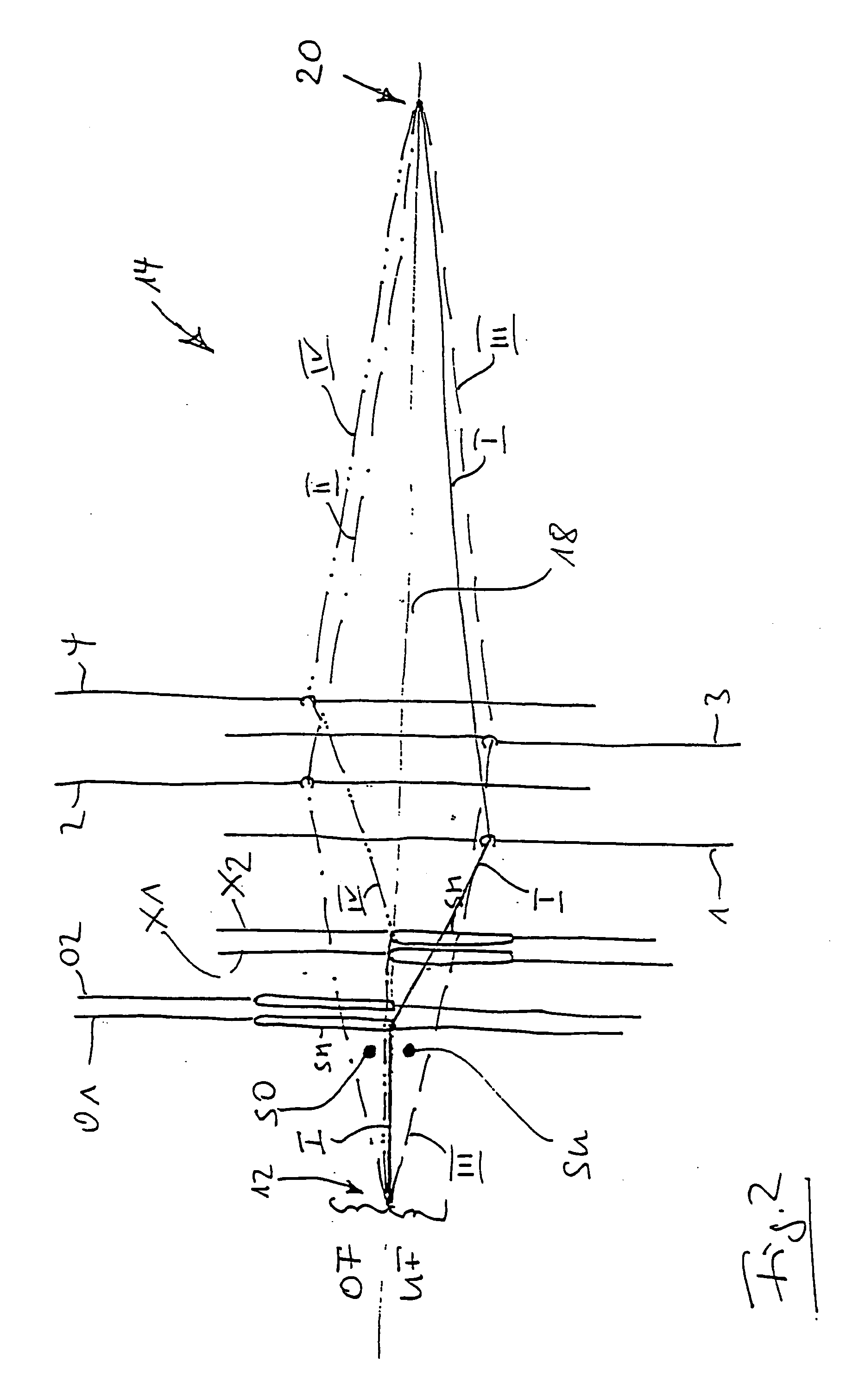[0007] The invention is based on the objective of proposing a method for producing a woven and a heddle (heald) particularly for use thereby whilst avoiding, or at least greatly reducing, the disadvantages known with prior art. This objective is achieved by a method as it reads from claim 1 and by a heddle (heald) as it reads from claim 4. The advantages of the method in accordance with the invention and of the heddle as employed thereby can be described as follows. This method now makes it possible to double output by employing to
advantage a double pick technique (picking two superposed wefts simultaneously) in creating with normal halved basic weave placement (1H-1L from 2H-2L and 2H-2L from 4H-4L, etc) high / low shedding shaft-controlled by (for example as with elastic tapes) middle positioning the (elastic) threads located in the middle shed by interrupting the motion of normal
keying threads as needed for figuring the woven by halting the motion despite the full shaft
stroke. Halting the motion is attained by one end of the slotted heddle controlled up / down by a corresponding normal Jacquard heddle motion, the warp thread guided in the slotted heddle being unable to move beyond the middle position.
[0004] By the associated possibility of controlling the long repeats individually programmed, the regular weave repeats, contrary to the above, coming from the shaft control can be flexible interrupted so that figures, emblems or contours are produced functionally or in the
visual appearance by the contrasts between warp and weft material with weave interrupts or floating extensions. As a rule, woven tapes are produced in this way on modern narrow woven needle looms double-picked weft for weft. To render wovens elastic, additional elastic threads (bare or wrapped) can be worked in which, for example, in a 1H-1L weave result in even and uneven wefts becoming facing and backing wefts respectively. This is because the weft threads come to rest below and above in up and down motion of the elastic thread respectively.
[0004] By the associated possibility of controlling the long repeats individually programmed, the regular weave repeats, contrary to the above, coming from the shaft control can be flexible interrupted so that figures, emblems or contours are produced functionally or in the
visual appearance by the contrasts between warp and weft material with weave interrupts or floating extensions. As a rule, woven tapes are produced in this way on modern narrow woven needle looms double-picked weft for weft. To render wovens elastic, additional elastic threads (bare or wrapped) can be worked in which, for example, in a 1H-1L weave result in even and uneven wefts becoming facing and backing wefts respectively. This is because the weft threads come to rest below and above in up and down motion of the elastic thread respectively.
[0012]FIG. 2 is an illustration analogous to that of FIG. 1 showing the positioning of the heddles, but working out of step, at the material forming location of a loom.
[0009] Further huge advantages materialize when using the method in accordance with the invention and the heddle as employed therein on wide looms. In this arrangement, when using machines for example featuring double, simultaneous picking, e.g. double grip looms, through weaves can be alternated with hollow weaves by the threads weaving for example 1H-1L from the shaft motion being prevented from implementing their full motion individually with correct tie-in with (upper or lower) end of the slot in the middle shed when additionally drawn in the slotted heddle on
Jacquard loom control. Alternating up / down or vice-versa down / up of each individual slotted heddle as controllable individually by the
Jacquard loom over the
full width of the woven in halting the full motion of the warp thread in accordance with the shaft motion in the middle shed enables figures or functional contours to be produced. Applying the method in accordance with the invention and the slotted heddle in accordance with the invention doubles output for the same loom speed and with a corresponding desired woven structure coupled with the
advantage of an enormous reduction in the
motion intensity of the
Jacquard loom adding to its life.
[0009] Further huge advantages materialize when using the method in accordance with the invention and the heddle as employed therein on wide looms. In this arrangement, when using machines for example featuring double, simultaneous picking, e.g. double grip looms, through weaves can be alternated with hollow weaves by the threads weaving for example 1H-1L from the shaft motion being prevented from implementing their full motion individually with correct tie-in with (upper or lower) end of the slot in the middle shed when additionally drawn in the slotted heddle on Jacquard loom control. Alternating up / down or vice-versa down / up of each individual slotted heddle as controllable individually by the Jacquard loom over the
full width of the woven in halting the full motion of the warp thread in accordance with the shaft motion in the middle shed enables figures or functional contours to be produced. Applying the method in accordance with the invention and the slotted heddle in accordance with the invention doubles output for the same loom speed and with a corresponding desired woven structure coupled with the
advantage of an enormous reduction in the
motion intensity of the Jacquard loom adding to its life.
 Login to View More
Login to View More  Login to View More
Login to View More 


